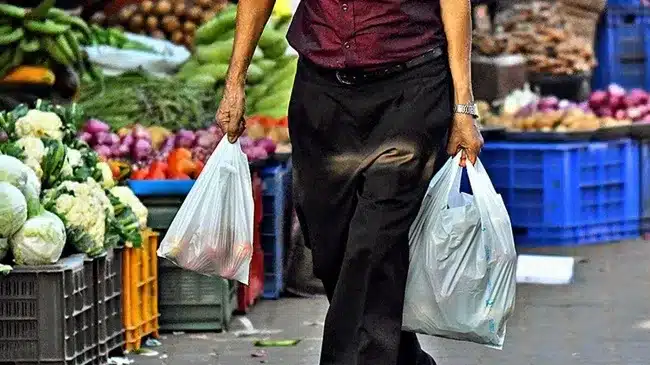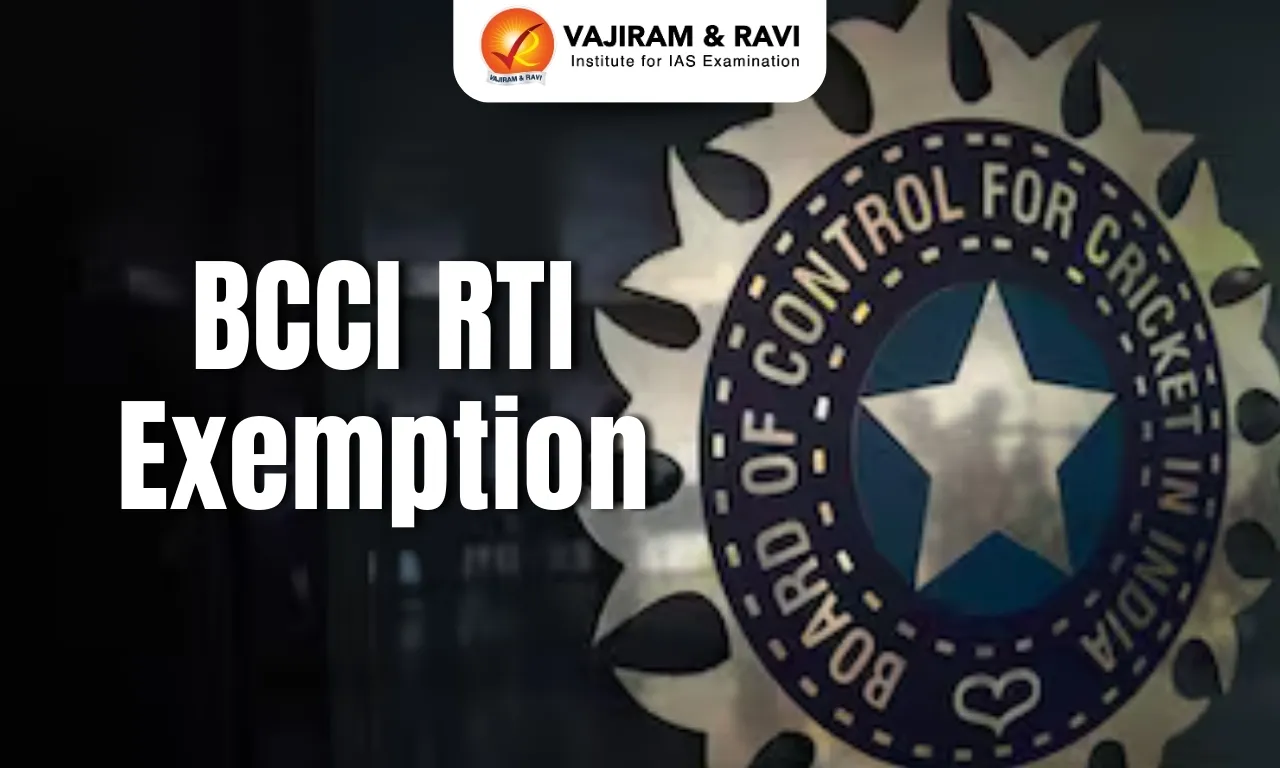What’s in today’s article?
- Why in news?
- What is Consumer Expenditure Survey (CES)?
- What is the significance of Consumer Expenditure Survey (CES)?
- Background:
- News Summary: Household Consumption Expenditure Survey 2022-23
- Key findings: Household Consumption Expenditure Survey 2022-23
Why in news?
- For the first time in about 11 years, the government released the data of the All-India Household Consumption Expenditure Survey.
- The survey was carried out between August 2022 and July 2023.
- The data will play a key role in reviewing critical economic indicators, including the Gross Domestic Product (GDP), poverty levels, and the Consumer Price Inflation (CPI).
Consumer Expenditure Survey (CES)
- The CES is traditionally a quinquennial (recurring every five years) survey conducted by the government’s National Statistical Office (NSO).
- It is designed to collect information on the consumption spending patterns of households across the country, both urban and rural.
- The data gathered in this exercise reveals the average expenditure on goods (food and non-food) and services.
- It helps generate estimates of household Monthly Per Capita Consumer Expenditure (MPCE) as well as the distribution of households and persons over the MPCE classes.
Significance of Consumer Expenditure Survey (CES)
- Vital in gauging the demand dynamics
- The estimates of monthly per capita consumption spending are important in measuring the demand dynamics of the economy.
- It is also useful for understanding the shifting priorities in terms of baskets of goods and services.
- Assessment of growth trends across different strata
- It is helpful in assessing living standards and growth trends across multiple strata.
- Invaluable analytic and forecasting tool
- The CES is an invaluable analytical as well as forecasting tool.
- It helps policymakers spot and address possible structural anomalies that may cause demand to shift in a particular manner.
- It provides pointers to producers of goods and providers of services.
- It isused by the government in rebasing the GDP and other macro-economic indicators.
- The CES is an invaluable analytical as well as forecasting tool.
Background
- The last survey on consumer expenditure was conducted in the 68th round (July 2011 to June 2012).
- This is because the government had junked the findings of the last Survey, conducted in 2017–18, citing data quality issues.
- In November 2019, the Statistics and Programme Implementation Ministry said it was examining the feasibility of conducting the next Survey in 2020–2021 and 2021–22.
- This was to be done after incorporating all data quality refinements in the survey process, as recommended by an expert panel.
- The expert panel had vetted the discrepancies in the 2017–18 results and recommended certain changes.
- However, the Survey could not be launched in the last two years due to the pandemic.
- Finally, a decision has been taken to conduct the Survey from July 2022.
News Summary: Household Consumption Expenditure Survey 2022-23
- Ministry of Statistics and Programme Implementation has conducted Household Consumption Expenditure Survey (HCES) during August 2022 to July 2023.
Key findings: Household Consumption Expenditure Survey 2022-23
- Average monthly per capita consumption expenditure (MPCE)
- As per the latest Survey, the average MPCE in Indian households rose by 33.5% since 2011-12 in urban households to ₹3,510.
- Rural India’s MPCE saw a 40.42% increase over the same period to hit ₹2,008.
- The MPCE numbers mentioned above donot include the estimated values of things people get for free through social welfare programs like the PM Garib Kalyan Ann Yojana (PMGKAY) or state-run schemes.
- It, however, included a few non-food items received through such schemes, including computers, mobile phones, bicycles, and clothing.
- By adding the imputed cost of free items, the average monthly consumption expenditure stood at Rs 3,860 in rural areas and Rs 6,521 in urban areas.
- Difference in average MPCE between rural and urban households
- The difference in average MPCE between rural and urban households has narrowed to 71.2 per cent in 2022-23 compared with 83.9 per cent in 2011-12.
- This suggests rural consumption spending has risen more than urban consumption spending during the 11-year period.
- Average MPCE of the bottom 5 per cent of rural population and of urban population
- The bottom 5 per cent of rural population has an average MPCE of Rs 1,373, while it is Rs 2,001 for the bottom 5 per cent of urban population.
- The top 5 per cent of the rural and urban population has an average MPCE of Rs 10,501 and Rs 20,824, respectively.
- In other words, while the MPCE of top 5 per cent of rural population is 7.65 times more than its bottom 5 per cent, the MPCE of top 5 per cent of urban population has an MPCE of over 10 times its bottom 5 per cent.
- Share of expenditure on food
- In 2022-23, the share of expenditure on food in rural India was 46 per cent (Rs 1,750), and in urban India was 39 per cent (Rs 2,530).
- In 2011-12, it was 52.90 per cent in rural India and 42.62 per cent in urban India. This has implications for consumer price index-based inflation.
- Consumption expenditure on non-food items
- Consumption expenditure on non-food items in both rural India (54%) and urban India (61%) was mainly driven by a rise in share of spending on conveyance, consumer services, durable goods in 2022-23 as against 2011-12.
- The share of expenditure on cereals, pulses and vegetables moderated during the same period.
- Comparison among states
- Among the States, the MPCE is the highest in Sikkim for both rural (₹7,731) and urban areas (₹12,105).
- It is the lowest in Chhattisgarh, where it was ₹2,466 for rural households and ₹4,483 for urban household members.
Q1) Where is National Statistical Office (NSO)?
The National Statistical Office (NSO) is a wing of the Ministry of Statistics and Program Implementation (MoSPI). The NSO’s primary function is to collect, compile, and release official statistics.
Q2) What is Consumer Price Index (CPI)?
The Consumer Price Index (CPI) is a measure of the average change in prices paid by consumers for goods and services over time. The CPI is calculated using a representative basket of goods and services that are typically purchased by specific groups of households.
Source: After a 11-year gap, Centre discloses key consumption expenditure survey data | PIB | MOSPI | Indian Express
Last updated on August, 2025
→ UPSC Mains Admit Card 2025 will be released soon at www.upsc.gov.in.
→ UPSC Mains 2025 will be conducted on 22nd August 2025.
→ UPSC Notification 2025 was released on 22nd January 2025.
→ UPSC Calendar 2026 is released on 15th May, 2025.
→ UPSC Prelims Question Paper 2025 and Unofficial Prelims Answer Key 2025 are available now.
→ UPSC Prelims Result 2025 is out now for the CSE held on 25 May 2025.
→ The UPSC Vacancy 2025 were released 1129, out of which 979 were for UPSC CSE and remaining 150 are for UPSC IFoS.
→ UPSC Prelims 2026 will be conducted on 24th May, 2026 & UPSC Mains 2026 will be conducted on 21st August 2026.
→ The UPSC Selection Process is of 3 stages-Prelims, Mains and Interview.
→ UPSC Result 2024 is released with latest UPSC Marksheet 2024. Check Now!
→ UPSC Toppers List 2024 is released now. Shakti Dubey is UPSC AIR 1 2024 Topper.
→ Also check Best IAS Coaching in Delhi















